
|   |

|   |
Parampara Festival - Tapati Chowdurie e-mail: tapatichow@yahoo.co.in August 16, 2021 Shinjan Nrityalaya under the able guidance of Aloka Kanungo designed a 12 days long festival Parampara in collaboration with Eastern Zone Cultural Centre, Ministry of Culture, Government of India, supported by Kadambini, an Odiya magazine. The festival commenced with Nritya Kovida with four renowned Odissi dancers Dr. Snehaprava Samantray of Bhubaneswar, Daksha Mashruwala of Mumbai, Rohini Dandavate from USA and Niharika Mohanty also from USA showcasing their well researched choreographies. They shared their training, experiences, their journey and their contributions. Under their active participation Odissi got its popularity in the world stage. 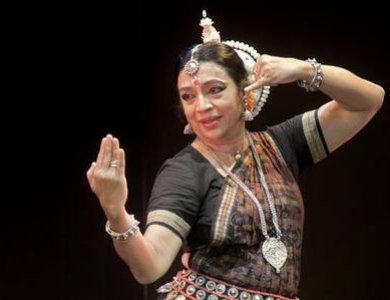 Daksha Mashruwala 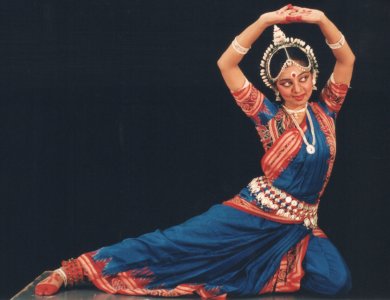 Niharika Mohanty The presence of four illustrious aficionados of dance, who have contributed a lot for the promotion, propagation of the performing arts, namely Dr. Gouri Basu- Director of EZCC; Dr. Sangita Gosain, Chief Executive of GKCM Odissi Research Centre - a renowned scholar and vocalist; Rajashree Chintak Behera - 1st Secretary, Indian Embassy, Beijing, and an eminent Odissi dancer; Sadhana Srivastav - a popular anchor and media person, spelt excellence. Their presence greatly benefitted young aspirants of dance. It was indeed a gala virtual event in which all the classical dance styles and Gaudiya Nritya were showcased. The first five days were devoted to Odissi dance by young dancers from across the country and abroad. The objective of the festival, it appeared to me, was didactic in nature. The festival was dedicated to the father of Odissi dance, Kabi Chandra Kalicharan Pattanayak, who gave Odissi its name, Gotipuas, Maharis, dance gurus and dancers. Aloka Kanungo, the Director of Parampara, tried to play her part in arousing the interest of young people towards the performing arts. She feels many gifted dancers are lost to other lucrative professions. Through this program she sought to change the minds of talented youngsters to think of dance as a profession. The program was moderated by Baishali Bhuniya with support from Supradipta Datta, Pompi Mukherjee, Shreelina Ghosh and Nivedita Daw Datta. 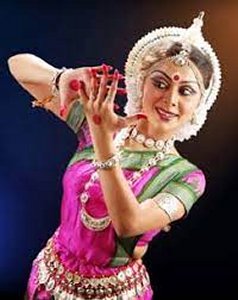 Kaustavi Sarkar 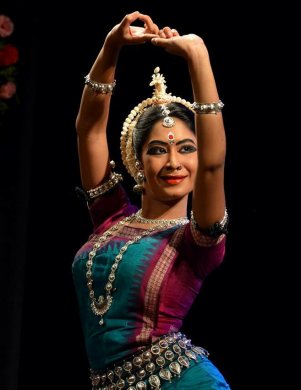 Preetisha Mohapatra  Debashis Patnaik 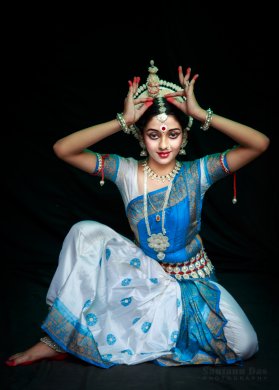 Shreepunya Mohanty Odissi dancer Kaustavi Sarkar - Professor, Department of Dance at UNC Charlotte, USA and Artistic Director of Kaustavi Movement Centre - gave an overview of the form and spoke about the Odissi costumes among other things. Very significantly seeking the blessings of the goddess of learning, her dance vocalized freedom of voice and expression and connected her piece with today's women. Using the metaphor of a young bird in flight, she sought individual freedom which has been curbed by the oppressors who have taken away her economic, physical and intellectual freedom. Her theme was contemporary and appealing. Srabanik De, Aishwarya Singh Dev, Debashis Patnaik, Sarita Mishra, Rudra Prasad Swain, Sipra Swain, Preetisha Mohapatra, and Shreepunya Mohanty were pleasurable to watch. Some excellent Kathak renditions in the festival were by Souvik Chakraborty, Indrayanee Mukherjee, Vishal Krishna, Shinjini Kulkarni, Paramita Moitra and Sandip Mallick. The rasikas got brief glimpses of Taal Dhamar, Pancham Sawari besides rendition of an excellent abhinaya piece from the Geet Govinda - Sakhi he keshi. Vishal Krishna paid his obeisance to Shiva.  Sharanya Chandran Bharatanatyam performer Sharanya Chandran enlightened the rasikas with the stylized method of storytelling. For this festival, she performed Ardhanarishwar. Himanshu Srivastava presented Kala Bhairava Astakam by Adi Shankaracharya. Shweta Prachande danced to "Om Saravana Bhava" while Samrat Dutta danced on the Shiva concept and Anuradha Vikranth did Krishna Leela. All the pieces by the Bharatanatyam dancers were on themes of gods of Hindu mythology. These seasoned dancers made their mark but they could also use their style to themes that are relevant today. They could perhaps explore avenues less trod upon and besides glorifying its antique value, use it for the good of society. Kerala has a bounty of dance styles including the popular classical dance forms of Mohiniattam and Kathakali. In this forum of Parampara, the objective of enlightening dance lovers and aspirants were more than fulfilled. Priyadarshini Ghosh, Mom Ganguly, Smitha Rajan, and Methil Devika presented Mohiniattam with utmost precision and nuanced expressions, while Diptangshu Paul and Ramyani Roy brought out the elements of Kathakali in their presentations. Methil Devika's Sarpatatwam took the rasika to an experience of mysticism and Priyadarshini's lasya aspect was presented beautifully. Manipuri scholar cum performer Poushali Chatterjee's performance of Brahmataal Prabhanda based on two or more talas left an indelible mark on dance lovers. Her choreography showed the beautiful dance of Lord Krishna in tandava style performed in Raasleela in taal Prabhanda with Radha and the Gopis. It was set on Dui taal, macha taal of 12 beats and two stresses, taal Brahmataal of 28 beats and 10 stresses, Melmatek of 7 beats and two stresses, Khoirabaji of 16 beats and three stresses and taal Menkup of 6 beats and one stress. Before this she led the audience into "Shaksat Darshan"- which was a guru Bipin Singh composition of "Ogo Lalite". Sinam Basu Singh's solo "Krishna Roop Barnan" described the physical beauty of Sri Krishna. Dipping movements coupled with grace and sweetness of expression and gentle lifting of the legs created rasa. Clad in traditional innaphi and phanek, Karuna Devi wearing soundless ankle ornaments performed Samod Damodar. The beauty of the lyrical body movements spoke of the feelings of the Gopa Badhus. She was superb. Sudip Ghosh, a disciple of Guru Chorajit Singh, danced in praise of Hari. It was a prayer to the lord from a devotee.  Poushali Chatterjee 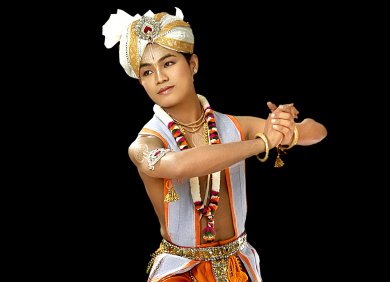 Sinam Basu Singh After a brief exposition of Assam's living tradition of Sattriya dance, Anwesa Mahanta spoke about the roots of the form and the Bhakti Movement of the 15th century started by Srimanta Sankaradeva and performed Bhatima eulogizing Sri Krishna. Sattriya dancer Naren Chandra Barua and Seuj Priya Goswami displayed Bahar Nritya and Ashtanyika. Kuchipudi scholar /performer Minu Thakur's explanation of Kuchipudi was greatly helpful to an uninitiated audience. Kuchipudi dancer Srimoyee Vempati, daughter-in-law of Guru Vempati Chinna Satyam, regaled a virtual audience with her guru's composition of Jayadeva's ashtapadi "Pasyati dishi dishi" emoting very convincingly Radha's depth of despair waiting for her beloved Krishna. Prateeksha Kashi's vibrancy in presenting Narayana Teertha's Tarangam and Bhama Kalapam were gems that one never gets tired of. Gururaju's piece was on Nataraja with excellently executed postures.  Tapati Chowdurie trained under Guru Gopinath in Madras and was briefly with International Centre for Kathakali in New Delhi. Presently, she is a freelance writer on the performing arts. |